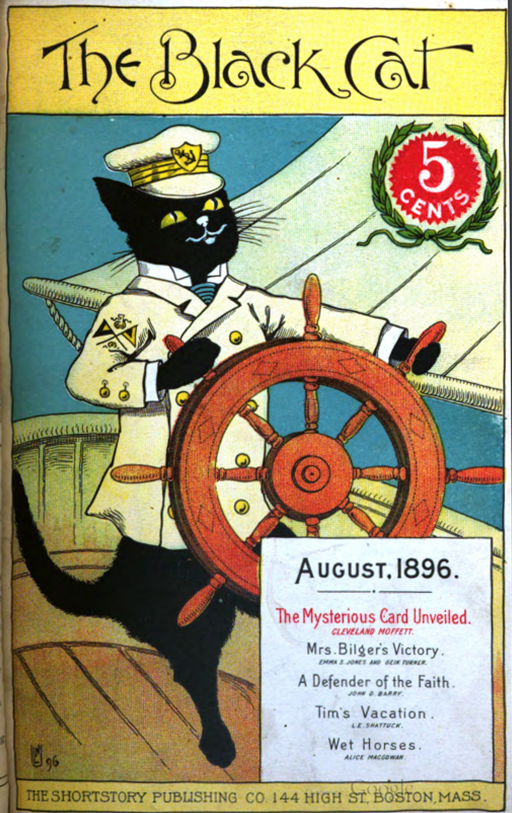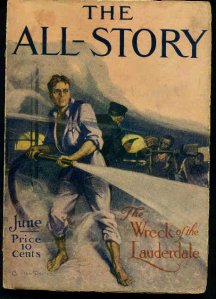|
Old Corner Bookstore
The Old Corner Bookstore is a historic commercial building located at 283 Washington Street at the corner of School Street in the historic core of Boston, Massachusetts. It was built in 1718 as a residence and apothecary shop, and first became a bookstore in 1828. The building is a designated site on Boston's Freedom Trail, Literary Trail, and Women's Heritage Trail. The Old Corner Bookstore was listed on the National Register of Historic Places in 1973. This building is currently under consideration for Boston Landmark status by the Boston Landmarks Commission. History The site, situated on what was then part of Cornhill, was formerly the home of Anne Hutchinson, who was expelled from Massachusetts in 1638 for heresy. Thomas Crease purchased the home in 1708, though it burned down in the Great Boston Fire on October 2, 1711.Wilson, Susan. ''Boston Sites & Insights: An Essential Guide to Historic Landmarks in and Around Boston''. Beacon Press, 2004: 175. Crease constructed a ... [...More Info...] [...Related Items...] OR: [Wikipedia] [Google] [Baidu] |
Ralph Waldo Emerson
Ralph Waldo Emerson (May 25, 1803April 27, 1882), who went by his middle name Waldo, was an American essayist, lecturer, philosopher, abolitionist, and poet who led the transcendentalist movement of the mid-19th century. He was seen as a champion of individualism and a prescient critic of the countervailing pressures of society, and his ideology was disseminated through dozens of published essays and more than 1,500 public lectures across the United States. Emerson gradually moved away from the religious and social beliefs of his contemporaries, formulating and expressing the philosophy of transcendentalism in his 1836 essay "Nature". Following this work, he gave a speech entitled "The American Scholar" in 1837, which Oliver Wendell Holmes Sr. considered to be America's "intellectual Declaration of Independence."Richardson, p. 263. Emerson wrote most of his important essays as lectures first and then revised them for print. His first two collections of essays, '' Essays: Firs ... [...More Info...] [...Related Items...] OR: [Wikipedia] [Google] [Baidu] |
The Chap-Book
''The Chap-Book'' was an American literary magazine between 1894 and 1898. It is often classified as one of the first "little magazines" of the 1890s.(1982). ''The Chap-Book: A Journal of American Intellectual Life in the 1890s'' (Ann Arbor, MI: UMI Research Press) by Wendy Clauson Schlereth The first edition of ''The Chap-Book'' was dated 15 May 1894. Its editor was Herbert Stuart Stone and it was published by Stone and Kimball. It was originally published in Cambridge, Massachusetts, but after six months moved to Chicago, Illinois when Stone and Kimball relocated to Chicago. ''The Chap-Book'' was published twice monthly. Its final issue was issued on 1 July 1898. After this, it merged with ''The Dial''. Contributors to ''The Chap-Book'' included Henry James, Hamlin Garland, Eugene Field, Bliss Carman, Julian Hawthorne, Max Beerbohm, W. E. Henley, H. G. Wells Herbert George Wells [...More Info...] [...Related Items...] OR: [Wikipedia] [Google] [Baidu] |
The Century Magazine
''The Century Magazine'' was an illustrated monthly magazine first published in the United States in 1881 by The Century Company of New York City, which had been bought in that year by Roswell Smith and renamed by him after the Century Association. It was the successor of '' Scribner's Monthly Magazine''. It was merged into '' The Forum'' in 1930. History The initial editor was to have been Scribner's editor and co-owner Josiah G. Holland, but he died prior to the appearance of the first issue. He was succeeded by Richard Watson Gilder, the managing editor of Scribner's, who would go on to helm ''The Century'' for 28 years. Gilder largely continued the mixture of literature, history, current events, and high-quality illustrations that Holland had used at Scribner's. The magazine was very successful during the 19th century, most notably for a series of articles about the American Civil War which ran for three years during the 1880s. It included reminiscences of 230 participants ... [...More Info...] [...Related Items...] OR: [Wikipedia] [Google] [Baidu] |
Catholic World
''The Catholic World'' was a periodical founded by Paulist Father Isaac Thomas Hecker in April 1865. It was published by the Paulist Fathers for over a century. According to Paulist Press, Hecker "wanted to create an intellectual journal for a growing Catholic population, and insisted that it be a first-class publication in format, quality, and style, equal if not superior to any secular magazine in the country." Early issues featured many articles by Orestes Brownson, including the May 1870 essay "Church and State", which described Brownson's understanding of the proper relationship between the Church and the state.David J. O'Brien, ''Isaac Hecker: An American Catholic'' (SUNY Press, 1992). In the twentieth century, the magazine included commentary on political and religious events of the day, as well as fiction and poetry by Catholic writers. The magazine was renamed ''New Catholic World'' in 1972, but reverted to its original title in 1989. It ceased publication in 1996. ... [...More Info...] [...Related Items...] OR: [Wikipedia] [Google] [Baidu] |
Bradley His Book
''Bradley, His Book'' (1896–1897) was an American magazine established by Will H. Bradley in Springfield, Massachusetts, in the late 19th century. Contributors included Richard Harding Davis, Nixon Waterman, Julia Draper Whiting, and others. Its visual style was unusually unified throughout the publication; "posters intended as art mingled with advertisements ... for such consumer goods as lawn sprinklers." Among the artists featured in the magazine were William Snelling Hadaway and Maxfield Parrish.Museum of Fine Arts, BostonBradley: His Book, Vol. II/ref> References Images Image:1896 Bradley His Book v1 no1 Springfield Massachusetts.png, Bradley His Book, v.1, no.1, 1896 Image:1896 Sherman BradleyHisBook v1 no4.png, 1896 Image:1896 BostonDailyGlobe ad Bradley His Book v1 no2.png, Advertisement for Boston Daily Globe ''The Boston Globe'' is an American daily newspaper founded and based in Boston, Massachusetts. The newspaper has won a total of 27 Pulitzer Prizes, and h ... [...More Info...] [...Related Items...] OR: [Wikipedia] [Google] [Baidu] |
The Bookman (New York)
''The Bookman'' was a literary journal established in 1895 by Dodd, Mead and Company. It drew its name from the phrase, "I am a book-man," by James Russell Lowell. The phrase, without the hyphen, regularly appeared on the cover and title page of the bound edition. Frank H. Dodd, head of Dodd, Mead and Company, established ''The Bookman'' in 1895. Its first editor was Harry Thurston Peck, who worked on its staff from 1895 to 1906. With the journal's first issue in February 1895, Peck created America's first bestseller list. The lists in ''The Bookman'' ran from 1895 until 1918, and is the only comprehensive source of annual bestsellers in the United States from 1895 to 1912, when ''Publishers Weekly'' began publishing their own lists. In the April 1895 edition, ''The Bookman'''s editors explained the need for an American version of the already established The Bookman (London): "''The Bookman'' has been a great success since its first appearance in London in 1891, and it is bel ... [...More Info...] [...Related Items...] OR: [Wikipedia] [Google] [Baidu] |
The Black Cat (US Magazine)
''The Black Cat'' was an American fiction magazine launched in 1895 by Herman Umbstaetter, initially published in Boston, Massachusetts. It published only short stories, and had a reputation for originality and for encouraging new writers. Umbstaetter’s editorial approach was unusual in several ways: the cover price was low, at five cents; he paid on merit, not on story length; and he was willing to buy stories by new authors rather than insisting on well-known names. He frequently ran story contests to attract amateur writers. The magazine was immediately successful, and its circulation was boosted by the appearance in an early issue of “The Mysterious Card”, by Cleveland Moffett, which was so popular that two print runs of the issue it appeared in sold out. Many well-known writers appeared in its pages. Two of the best-known were Jack London, whose 1899 story “ A Thousand Deaths” sold just as he was about to give up attempting to become a writer, and Henry Mille ... [...More Info...] [...Related Items...] OR: [Wikipedia] [Google] [Baidu] |
The Atlantic
''The Atlantic'' is an American magazine and multi-platform publisher. It features articles in the fields of politics, foreign affairs, business and the economy, culture and the arts, technology, and science. It was founded in 1857 in Boston, as ''The Atlantic Monthly'', a literary and cultural magazine that published leading writers' commentary on education, the abolition of slavery, and other major political issues of that time. Its founders included Francis H. Underwood and prominent writers Ralph Waldo Emerson, Oliver Wendell Holmes Sr., Henry Wadsworth Longfellow, Harriet Beecher Stowe, and John Greenleaf Whittier. James Russell Lowell was its first editor. In addition, ''The Atlantic Monthly Almanac'' was an annual almanac published for ''Atlantic Monthly'' readers during the 19th and 20th centuries. A change of name was not officially announced when the format first changed from a strict monthly (appearing 12 times a year) to a slightly lower frequency. It was a mo ... [...More Info...] [...Related Items...] OR: [Wikipedia] [Google] [Baidu] |
Art Amateur
''The Art Amateur'' (1879–1903) was an American magazine published in New York in the 19th century. Editors included Montague Marks and John W. Van Oost.WorldCatThe art amateur/ref> References External links * JstorThe Art Amateur, Vol. 1, No. 1, Jun., 1879and other issues. Visual arts magazines published in the United States Defunct magazines published in the United States Magazines established in 1879 Magazines disestablished in 1903 Magazines published in New York City {{Art-mag-stub ... [...More Info...] [...Related Items...] OR: [Wikipedia] [Google] [Baidu] |
Army And Navy Journal
''Armed Forces Journal'' (''AFJ'') was a publication for American military officers and leaders in government and industry. Created in 1863 as a weekly newspaper, ''AFJ'' was published under various names by various owners in various formats for more than 150 years. The publication went all-digital after the July/August 2013 issue, and last updated its website on April 29, 2014. The brand is currently owned by Sightline Media Group, a holding of private equity firm Regent, which bought the media group in 2016 from Tegna. History 1800s The publication was founded as ''The Army and Navy Journal and Gazette of the Regular and Volunteer Forces'', a weekly newspaper printed in New York City. Its founders were brothers Francis Pharcellus Church and William Conant Church. William was a newspaperman and American Civil War veteran. In his youth, he had helped his father edit and publish the '' New York Chronicle''; in 1860, aged 24, he became publisher of the ''New York Sun'', and the ... [...More Info...] [...Related Items...] OR: [Wikipedia] [Google] [Baidu] |
Argosy (magazine)
''Argosy'', later titled ''The Argosy'', ''Argosy All-Story Weekly'' and ''The New Golden Argosy'', was an American pulp magazine from 1882 through 1978, published by Frank Munsey until its sale to Popular Publications in 1942. It is the first American pulp magazine. The magazine began as a children's weekly story–paper entitled ''The Golden Argosy''. In the era before the Second World War, ''Argosy'' was regarded as one of the "Big Four" pulp magazines (along with ''Blue Book'', ''Adventure'' and ''Short Stories''), the most prestigious publications in the pulp market, that many pulp magazine writers aspired to publish in.Lee Server, ''Danger Is My Business: an illustrated history of the Fabulous Pulp Magazines''. San Francisco: Chronicle Books. (1993) (pp. 22-6, 50) John Clute, discussing the American pulp magazines in the first two decades of the twentieth century, has described ''The Argosy'' and its companion ''The All-Story'' as "the most important pulps of their er ... [...More Info...] [...Related Items...] OR: [Wikipedia] [Google] [Baidu] |





_(Feb._1895).jpg)




